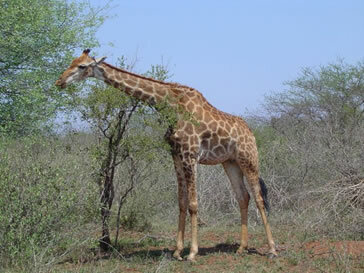There is an area in biology that we call Evolution. In this area we study how the evolution of various living beings occurred over the millions of years, that is, how living beings managed to maintain and develop their species over the years old.
Lamarck and Charles Darwin were scientists who lived many years ago and who studied the evolution of species in depth, and today they are well known and respected.
Every scientist had his or her own theory about the size of the giraffe's neck, but today experts believe that Darwin was right about the size of the neck of such animals.

Giraffes can reach up to 6 meters in height, with the neck alone measuring about 3 meters
It is believed that many, many years ago there were long-necked giraffes and short-necked giraffes. Short-necked giraffes fed on grass and bushes within their reach, while long-necked giraffes ate leaves they found in the tops of trees.

The long-necked giraffes fed on leaves from the treetops.
From time to time, the region where the giraffes lived experienced very intense droughts and there was a lack of food for the giraffes with the neck. short, while long-necked giraffes fed on the leaves of some very tall trees that remained alive during the dry.
Scientists have now found that at that time there were giraffes with necks of varying sizes; and that as they crossed with each other, they acquired greater genetic variability and, consequently, greater adaptation to the environment in which they lived.

When drinking water, the giraffe is in a vulnerable position and can be attacked by various predators, such as the lion
Today, we know that giraffes can reach up to 6 meters in length, and their neck is approximately 3 meters long.
Because of the size and weight of the neck, giraffes drink water with their feet apart and sleep standing up.
Paula Louredo
Graduated in Biology



